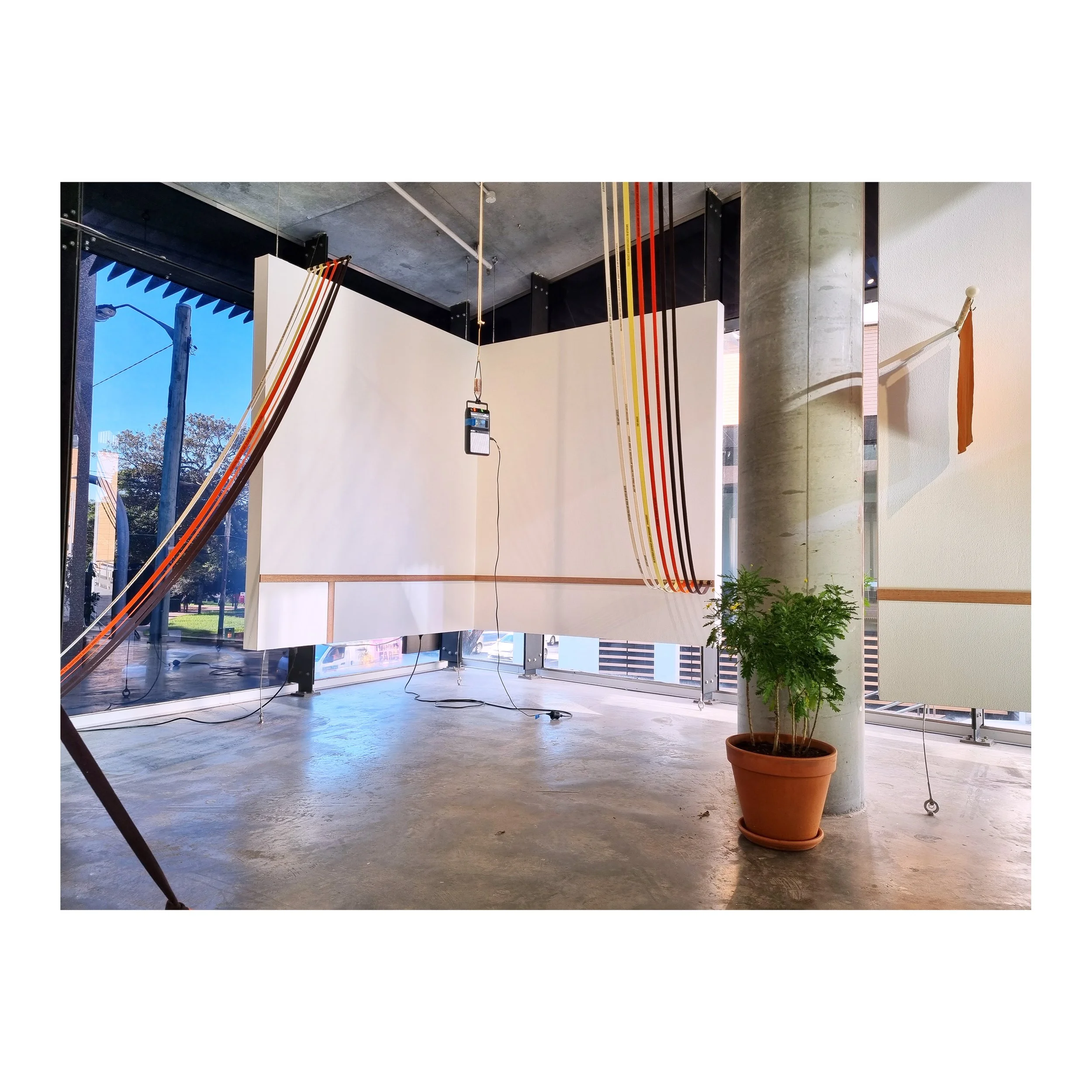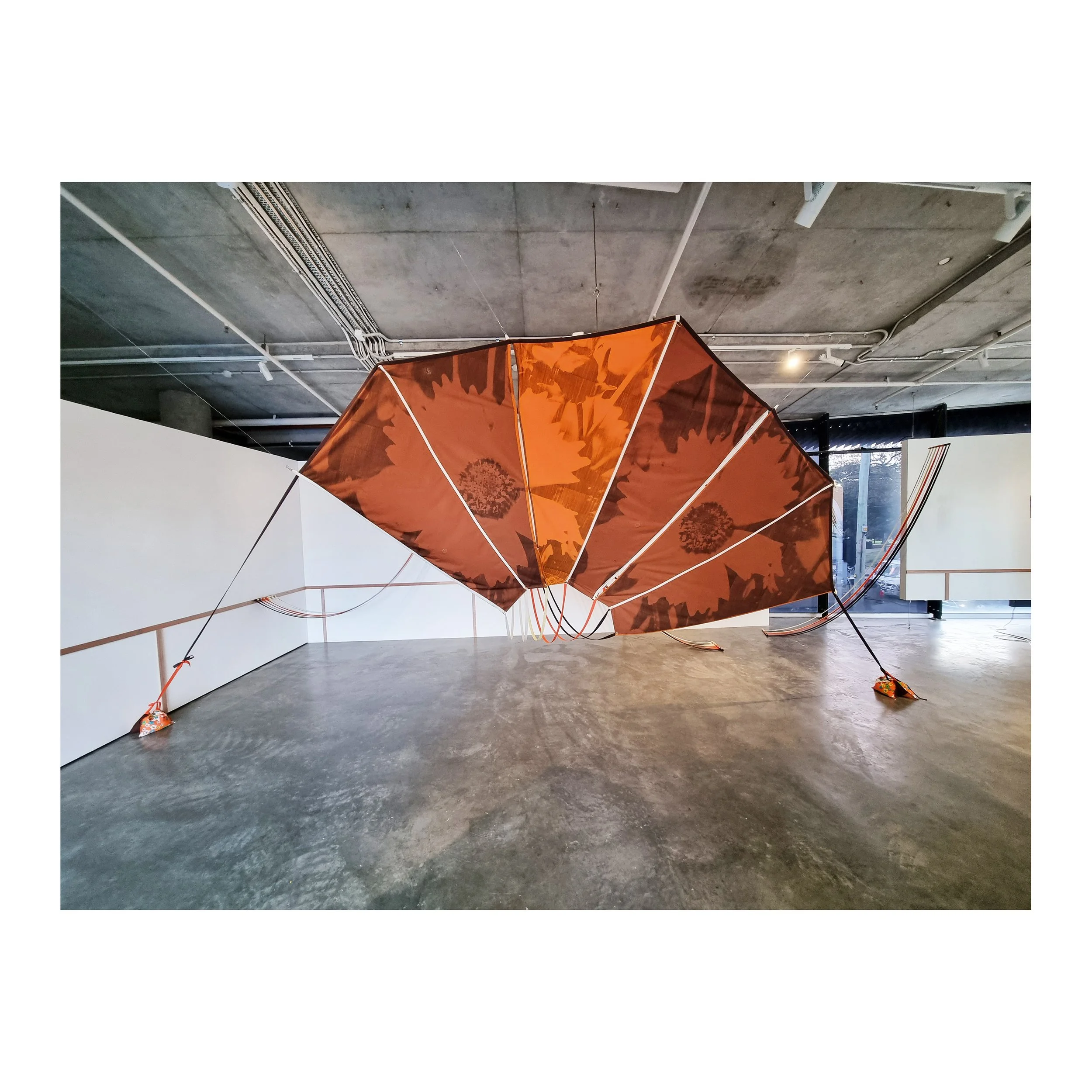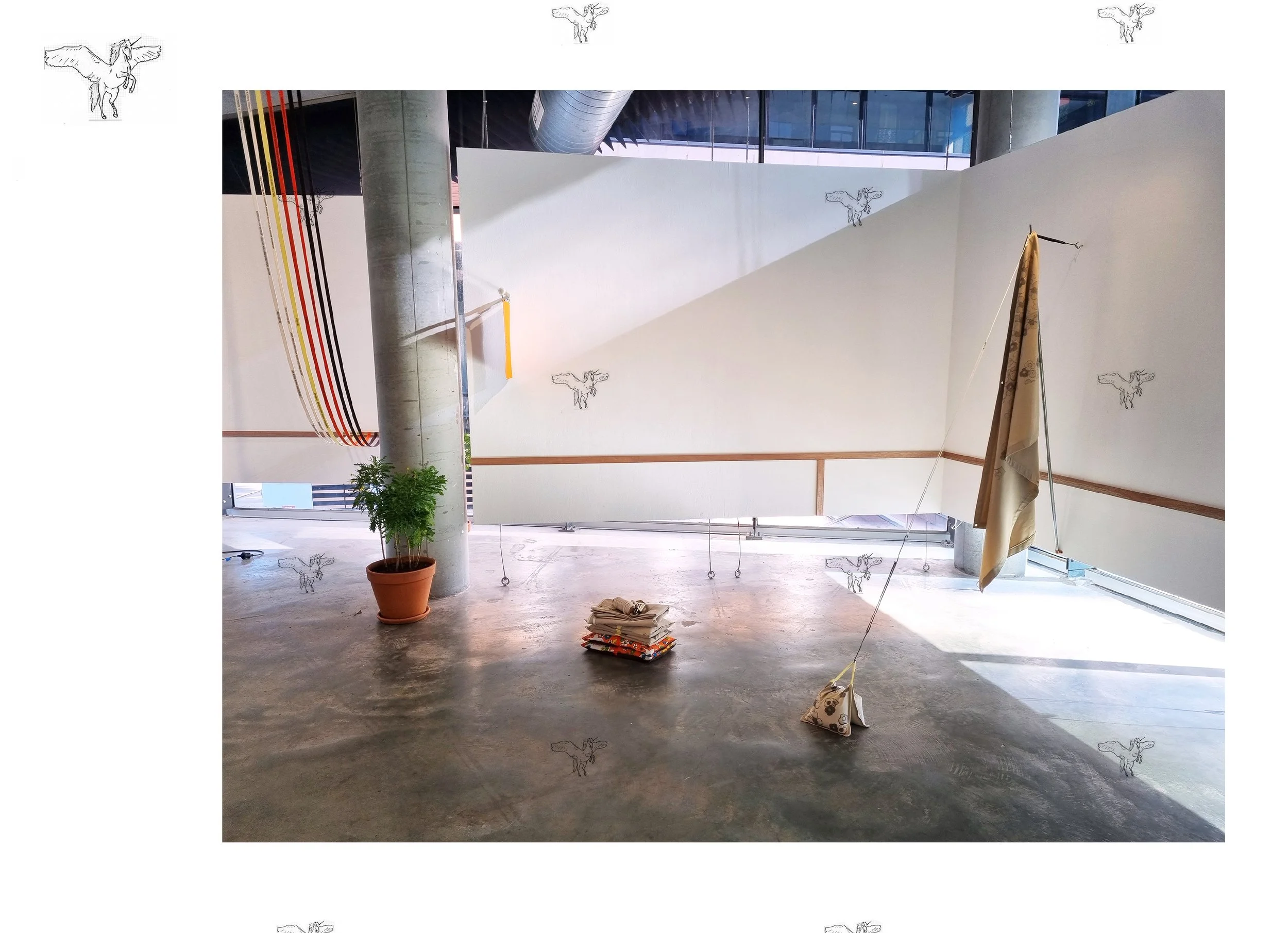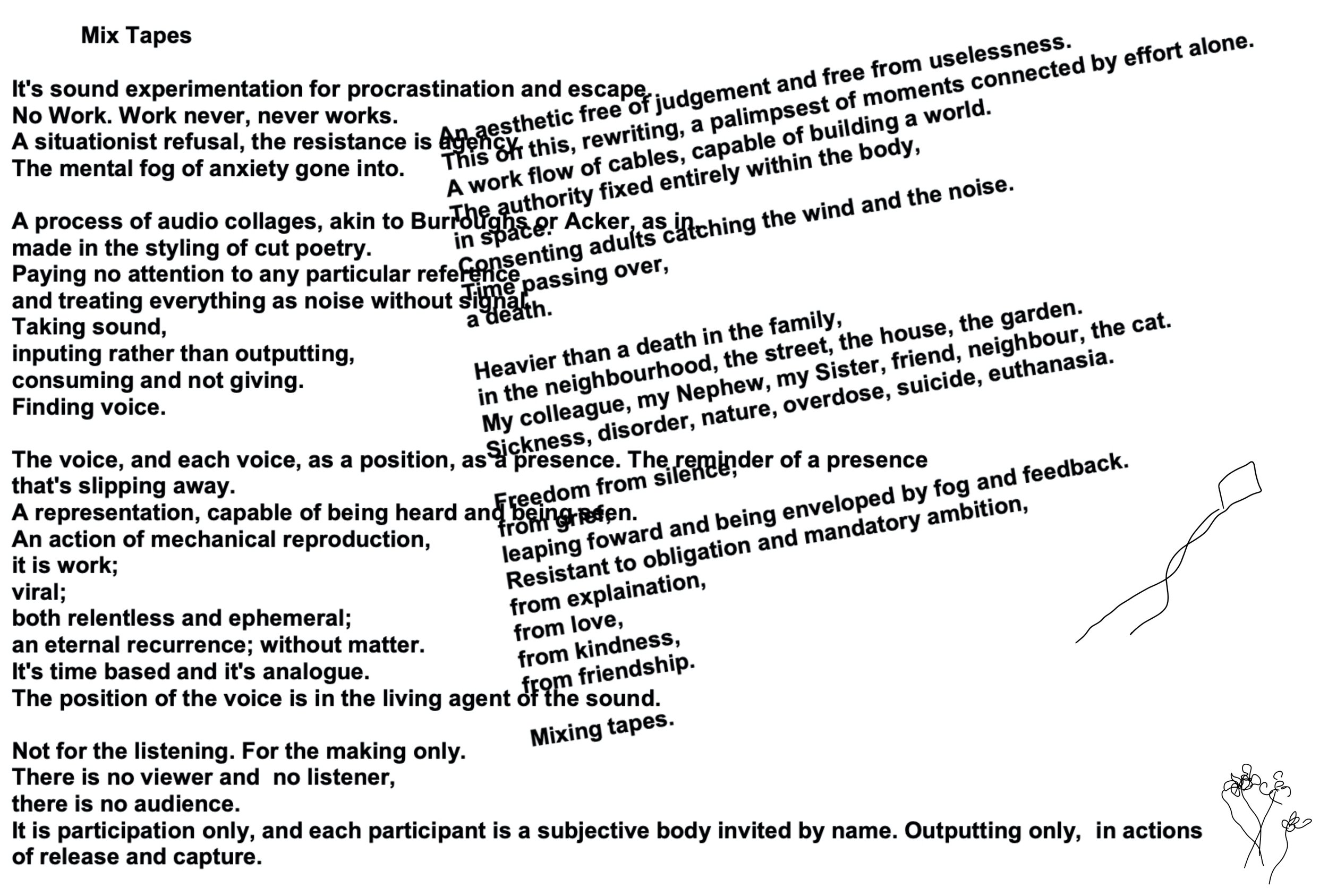Everything IS OK :)
Verge Gallery, Sydney
OPEN 13 May – 10 June 2022
LAUNCH Thursday 19 May, 6-8pm
Joe and Chanelle present their gallery exhibition Everything is ok :) at Verge, Sydney. Featuring iconic tent material from their Summer 68 series of artworks, a language of resistance is built around demonstrations of play and dialogue. An expression of agency in labour is made through sound, material, actions and words. Demands are focused through a criticality of care that speaks to a relational exchange as paramount within artistic practice.
1. Summer 68
The series Summer 68 draws from the political economy surrounding material and content; it brings into parallel themes of urban escape and urban unrest. The material is refashioned from pioneer Andre Jamet’s French brand of canvas tents from 1968. The year corresponds to both a peak in recreational camping activities as well as global civil rights protests including the revolutionary May ‘68 student protests and workers strikes across France.
Content is drawn from the Guy Debord archive and detourned specifically from his Situationist film Society of the Spectacle. Secretary to the International Situationist movement, Guy Debord's rallying contributions played an igniting factor that led to May 68’. His commentary on ideas of labour, and the role played by images in mediating the social relationship between society and commodities, are no less relevant today.
As a cultural form with associations to urban escape and political resistance, the tent denotes polarities of camping and protest, freedom and hardship, nostalgia and destitution.
2. Situationist Play
The constructed situation has its roots in theatre. The play, as in a production, remains in relationship to the notion of play. Where play is a finite temporal happening within present life which is a continuing series of events until death. Defined as spatially isolated and self-referential, play is game-like; rupturing the homogeneity of a dominant context. The disturbance brings a viewer to a place of questioning. Through doing play, an artist is given agency to act freely. A situation is created through a collaborative praxis between actor and audience. As such the focus remains on the actions involved rather than any enduring object as outcome.
3. Infra-distance
The chair rail is an architectural device popular in homes as protection against scratches and marks on the wall made by chairs.
In relation to the gallery wall, the chair rail invokes domestic space as an alteration that contaminates the ideology of the white cube. The institution of the home can be imprinted on the institution of the gallery by the chair rail. This intervention seeks to resist the aesthetic tropes that position the gallery as a political and ideologically neutral site of art. Notably, many commercial galleries in Sydney are transformed from spaces that were once homes.
The domestic is a theoretical domain of criticality, especially in connection between orthodox gendered positions and the home. It has historically become a domain of capture and emancipation. The chair rail has kinship to the chair, itself an object for an individual's subjective body.
The rail imposes an infra-distance onto the gallery wall becoming an exclusionary device of resistance. The infra-distance infers a positioning of above and below, a hierarchy that applies to the artist, artwork, arts worker and viewer in relation to the gallery. The rail then, is a signifying device of protection and by extension, care. Questioning the relationships at play in the gallery as an institution. The desire is to make those walls unreachable, challenging the promise that they contain.
4. Two Voices
Free Love:
“A language that demands, urgently and violently: care. A generative exchange and agency in labour. A criticality through care, using play. A position that can be both active in participation and maintain the potential to deactivate, become divested. Doing something nice, flying a kite, or having a picnic. Just looking to be invited to converse, an extension of love to collapse two worlds; work and life. Catered for by massive failure as a means of opening. Doing over making to relocate the work to the action. Relocating the site of art to the body and the use of time. A revolutionary release of time through play as resistance. Constructed relationships, situations, with an emphasis to act freely; to resist the positions of interest. A domain of emancipation and kinship for a subjective body." - Joe
A Lover’s Cheekbone:
“A play that happens to be naturally abrasive to the system. It scratches against the sides on its way past. Maybe doing a bit of damage in the process of making contact. Not adversarial. It just doesn’t stay in its lane or conform to the right shape. Joyful and harsh. Always making a play for a kind of loving 'fuck you', full of intimacy and without concern for any consequence but enjoyment, kinship, friendship, comradery, the gang, the good life, the game. A hypothetical but actually used playing field not made of spite or hate or jealousy. There are no sour grapes growing here. Just the things we do that happen to be antithetical to the status quo: hard work. The lazy artist. The drinking artist. The joker. The lark. All resistant. Revolutionaries even, if given enough purpose, and against the machine simply for not being welcome in its workings. Not in protest, just not still enough to remain squarely in an assigned place. That place, comfortable to others, that is easily read. Forever willing to deploy a playful elbow to a ‘lover’s’ cheekbone to guard that sensitive spot, to avoid the grabbing of an unsuspecting nerve, a flinch in defense of submission, sometimes leaving a bruise, a wound, but necessary just the same. 'I will not show my belly if you will not show yours'. Not even for the promise of a kiss.” – Chanelle
Verge Gallery
City Road, Jane Foss Russell Plaza, University of Sydney, Darlington, NSW, 2006
Open Monday-Friday 10am-5pm Thursday 10am-7pm





